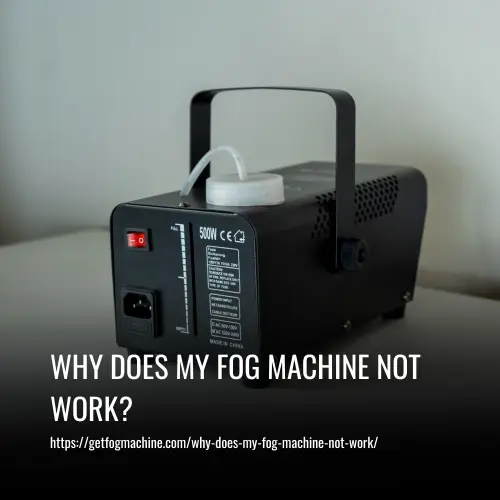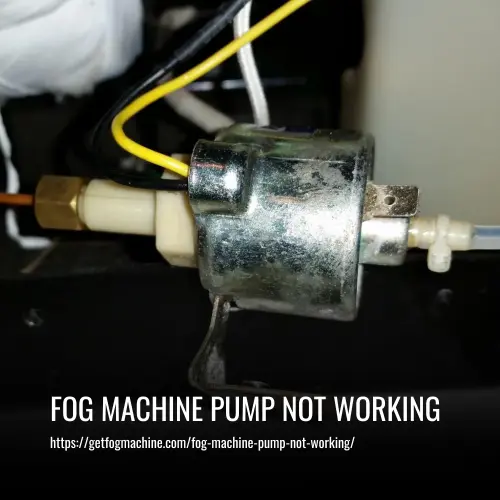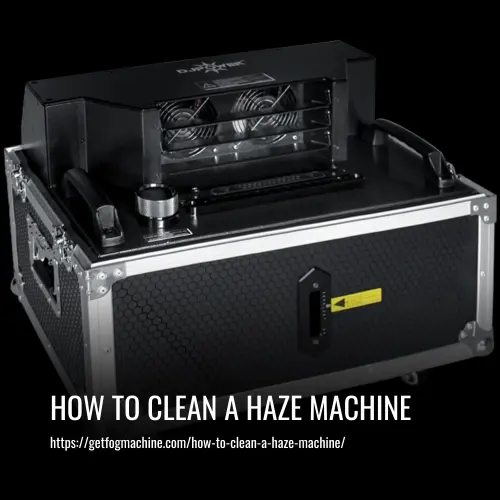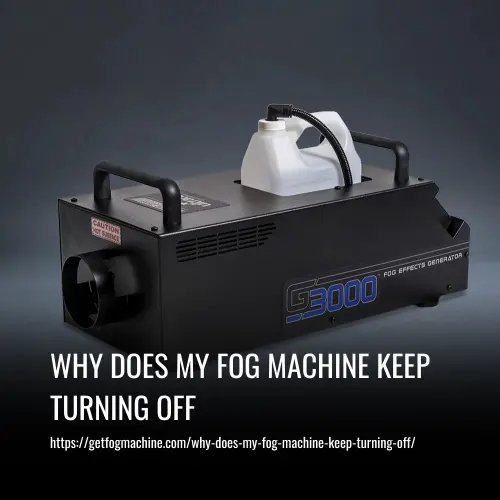How Hot Does A Fog Machine Get?
This post contains affiliate links. As an Amazon Associate, we earn from qualifying purchases.
Fog machines are a popular tool used in various industries, such as entertainment and industrial applications. The machines produce a type of smoke or fog by heating a mixture of water and fog fluid, creating an ambiance that adds a visual effect to the scene. How hot does a fog machine get is a commonly asked question.
In this article, we will provide you with the answer you are looking for. We will also cover various topics related to fog machines, including their types, heat exchangers, chemical composition, output nozzle, safety training, and much more. If you are interested in the use of fog machines or planning to use one in the future, read on to learn more.
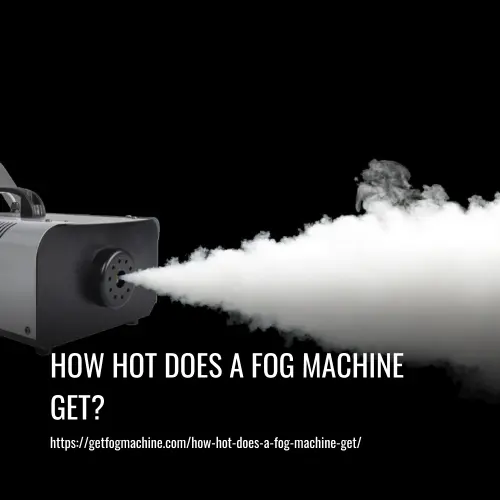
How Hot Does a Fog Machine Get
When it comes to special effects in entertainment, fog machines are an essential tool that helps create an atmosphere of mystery and intrigue. However, many people wonder about the safety of these machines, especially concerning the temperature they can reach when in use.
The temperature range of fog machines can vary depending on its size, power, and the type of fluid used. Generally, the heating element in a fog machine can get as hot as 400°F (204°C) to 500°F (260°C) to produce fog effectively. This high temperature is necessary to heat the fog fluid and turn it into a vapor that can create the desired effect.
There are several types of fog machines available based on their size, output nozzle, and the type of fluid used. For instance, low-power handheld machines might have temperature ranges of about 200°F (93°C) to 300°F (149°C), while professional-grade machines can reach 400°F (204°C) to 500°F (260°C). Some machines have heat exchangers that help regulate the temperature of the fog juice, while others have different boiling points to create unique fog effects.
Average Temperature Range for Fog Machines
Fog machines are designed to generate dense vapor that appears to be smoke or fog by heating up fog fluid. The average temperature range for fog machines typically falls between 200 and 400 degrees Fahrenheit.
However, the temperature range can vary depending on the power and size of the machine. The ambient room temperature also affects the temperature of the fog output. Factors such as power, size, and fluid type can also impact the temperature of fog machines.
Discussion on the Heating Element in Fog Machines
A key component of fog machines is the heating element, which is responsible for transforming the fog fluid into a visible fog that can be used for special effects in a variety of settings, including theme parks, dance clubs, and theatrical productions.
During operation, the heating element heats up the fog fluid, usually a mixture of water and fog juice, to a temperature that ranges between 200°F and 400°F. The heated fluid is then released through an output nozzle and combined with air, which causes it to expand and form fog particles of varying sizes.
There are several types of heating elements and heat exchangers commonly used in fog machine designs. One popular option is the metal block heat exchanger, which has the advantage of being durable and efficient. On the other hand, some fog machines use a coil-based heat exchanger, which is easy to clean but may not be as durable as other types.
It is important to note that heating elements in fog machines can reach extremely high temperatures, posing potential safety risks if not handled properly. As such, it is crucial to have proper safety training and ventilation before operating a fog machine. This may include wearing protective gear or ensuring that the ambient room temperature is kept within a specific range.
Factors That Affect Temperature in a Fog Machine
A fog machine is an essential tool in creating special effects for concerts, plays, dance clubs, and theme parks. However, when it comes to producing fog, the temperature of the machine plays an important role.
There are different factors that can affect the temperature of a fog machine, including the type of heat exchanger, the chemical composition of the fluid, and the ambient room temperature. Let’s take a closer look at these factors to understand how they impact the temperature of a fog machine.
1. Power of the Machine
When it comes to fog machines, the power of the machine is an important factor to consider when it comes to temperature. The wattage of the heating element and the size of the pump both affect the temperature of the machine.
The higher the wattage of the heating element, the hotter it will get. This makes it important to choose the right wattage for your needs – a 1,000-watt machine will produce hotter fog than a 400-watt machine.
Additionally, the size of the pump will affect the amount of fluid drawn into the heat exchanger, which also affects the temperature of the machine. A larger pump will draw more fluid into the heat exchanger, which in turn will increase the fog output. It’s important to choose the right pump size for your intended use.
2. Size of the Machine
Fog machines come in a range of sizes to suit different settings and purposes. The size of a fog machine can have a significant impact on its temperature range, heat exchanger wattage, and output levels in terms of cubic feet per minute (CFM) or cubic meters per minute (CMM).
Smaller fog machines, such as handheld and portable models, typically have lower wattage heat exchangers and produce less output per minute. These machines generally have a lower temperature range and are better suited for smaller spaces or personal use. Despite their limited power, they are often more portable and easier to use than industrial machines.
On the other hand, industrial fog machines are usually larger in size and have much higher wattage heat exchangers. They are capable of producing large amounts of output per minute, and their higher temperature range makes them well-suited for larger spaces such as concert venues, theme parks, or large dance clubs. These machines can cover vast areas and generate enough fog per minute to create stunning visual effects.
3. Fluid Type
Fog machines create special effects by mixing fluid with air and then heating the mixture until it vaporizes into a cloud of fog. But not all fog fluids are created equal. The type of fluid used in a fog machine can determine the opacity and dissipation of the fog effect.
There are different types of fog fluids available, with varying chemical compositions and boiling ranges. Water-based fluids are commonly used and are generally safe for all types of applications, including indoor use. These fluids are made by mixing water with one or more glycols or glycerine, which helps to create the fog effect.
Adding glycol or glycerin to the fluid can affect the opacity and dissipation of the fog. Glycerin tends to produce thicker, longer-lasting fog that dissipates more slowly. On the other hand, glycols produce thinner, less opaque fog that dissipates more quickly. But by combining different glycols and glycerine in the fluid, it is possible to create various types of fog effects.
It is important to note that using the correct fog fluid based on the type of fog machine being operated is crucial for optimal safety and performance. Each fog machine is designed to operate with a specific type of fluid and using the wrong fluid can lead to overheating, malfunction, and potential safety hazards.
FAQs
The temperature of a fog machine during operation varies based on its design and usage. Generally, fog machines heat up to approximately 300 to 400 degrees Fahrenheit (150 to 200 degrees Celsius) to vaporize the fog fluid and create the mist effect.
While the internal components of a fog machine reach high temperatures, the exterior casing typically remains at a safer temperature for touch. Manufacturers design fog machines with insulated casings to prevent excessive heat transfer, but caution should still be exercised when handling them during operation.
Fog machines are engineered with thermal safety features to prevent overheating during extended use. However, continuous operation for extended periods might result in the machine becoming quite warm. It’s advisable to adhere to the manufacturer’s recommended duty cycle to avoid potential overheating issues.
Yes, the heat generated by fog machines can differ based on their size, power output, and design. Higher-capacity or professional-grade fog machines may generate more heat due to their larger heating elements and increased output capabilities.
When used appropriately and in accordance with manufacturer instructions, fog machines are generally safe. However, improper use, such as placing flammable materials near the machine or using it in enclosed spaces without proper ventilation, could potentially pose a fire hazard. It’s crucial to operate fog machines in a well-ventilated area and maintain a safe distance from flammable objects.
Fog machines typically cool down within a reasonable time frame after being turned off, allowing safe handling for storage or maintenance. The cooling duration can vary depending on the specific model and the duration of its operation, but generally, it cools down within 15-30 minutes after being switched off.
Conclusion
Understanding how hot a fog machine can get is crucial for anyone who operates it or works near it. The heat exchanger in the machine reaches temperatures of up to 400 degrees Fahrenheit, which vaporizes the fog fluid and creates fog particles.
It is important to use the correct fog machine fluid to prevent the risk of slip hazards and avoid using the wrong fluid that could create hot vapor or smoke, causing safety hazards.



